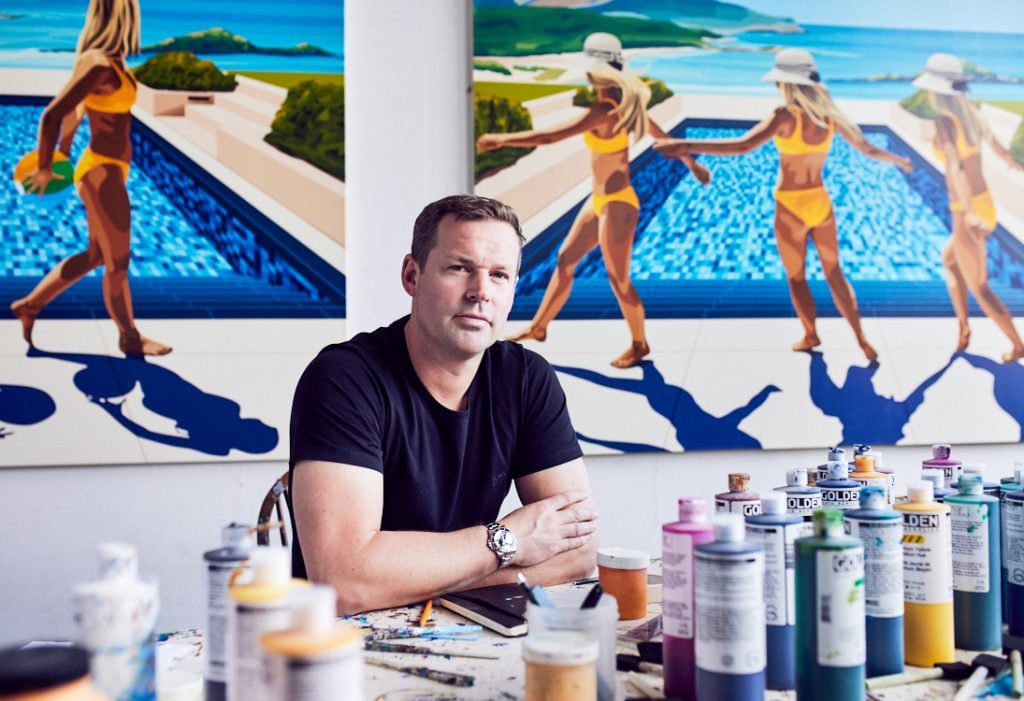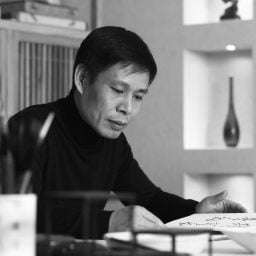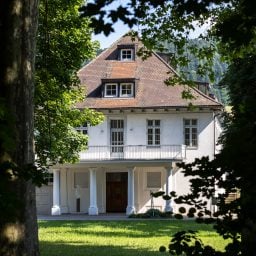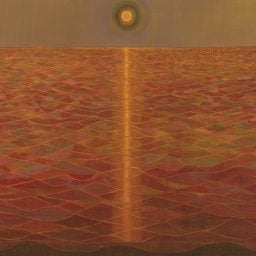British artist Will Martyr (b. 1980) developed his now-recognizable vibrant and colorful style first while studying at the esteemed Slade School of Fine Art in London. Drawing inspiration from myriad art historical artists and movements—from Pop art to Italian Renaissance painting—Martyr’s distinctive compositions have both an organic and hard-edge quality, lending an inimitable sense of balance. Frequently focusing on either urban or natural landscapes, there is a pervasive feeling of the utopic that offers viewers a form of visual escapism. In the artist’s more recent work, the human figure—often his wife—has taken a central compositional role, acting as both a narrative element as well as a conduit for viewers to insert themselves into Martyr’s otherworldly vignettes.
Opening this Friday, April 28, Maddox Gallery London is presenting “Will Martyr: A World Elsewhere.” On view through June 11, the exhibition follows Maddox Gallery Gstaad’s sold-out show of the same title held earlier this year. The forthcoming exhibition is comprised largely of works from three painting series, inspired by poolside views, Wimbledon tennis, and contemporary takes on the floral motif respectively.
We reached out to Martyr ahead of the exhibition to find out more about the show, his current artistic practice, and what he’s looking forward to working on next.
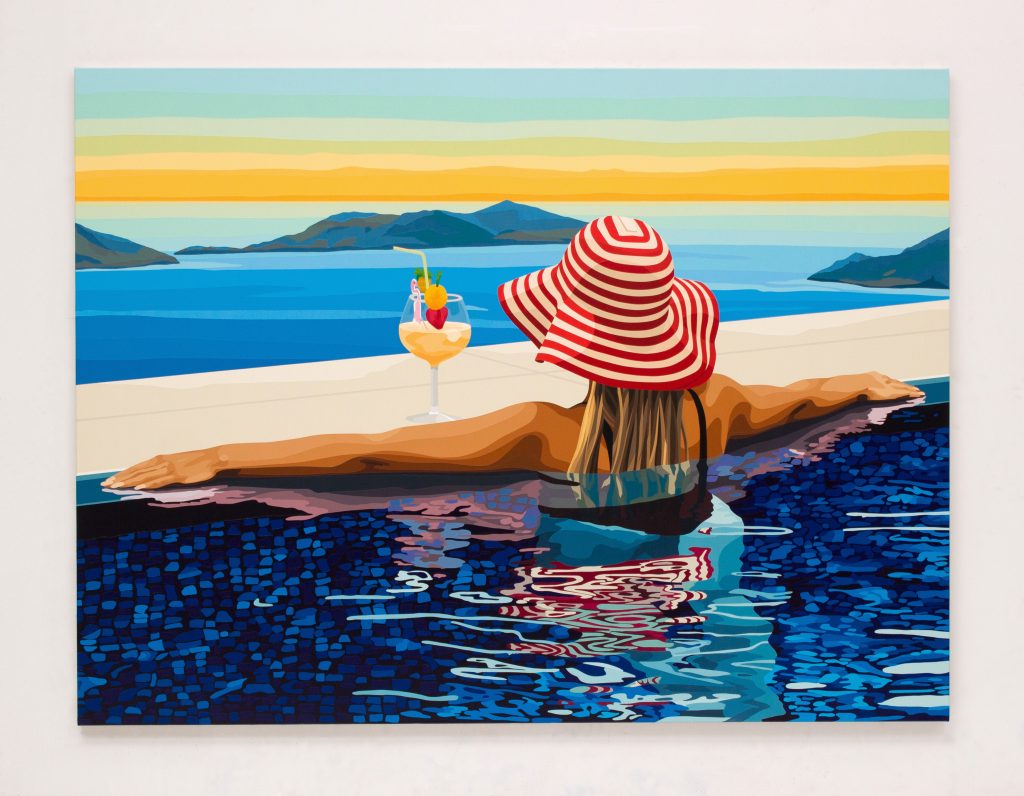
Will Martyr, Back To Where We Started (2022). Courtesy of Maddox Gallery, London.
Your show “A World Elsewhere” opens at Maddox Gallery this month. Can you tell us about the works and themes included in the exhibition?
Themes of companionship, love, and vitality are most compelling in “A World Elsewhere.” The vital ingredients for life—water and light nourish the compositions to provide us with scenes that convey a sense of joy and everlasting effervescence in impossibly perfect environments. A female figure is present in all the compositions. She is either our companion or contentedly relaxing alone. She seems to be reflective, yet completely relaxed in the profoundly beautiful settings she finds herself in. She is unguarded and unposed.
These compositions represent snapshots of personal memories. They are places I have visited and spent time with the people who matter most to me in my life. These memories of relaxation and reflection are collected, mixed, and merged to create a sense of timeless nostalgia in the compositions. They capture those profound moments of happiness and contentment we hold in our memory.
The depiction of water plays a vital role in this work. Metaphorically, it is the essence of all life, it’s cleansing, cooling, and relaxing. In the compositions, the water invites us in and is also often a perspective tool to lead your eye through the work. The immersive reflections and mirroring in water offers me an opportunity to indulge in complex color contrasts, giving huge complexity and depth to the surface of the work.
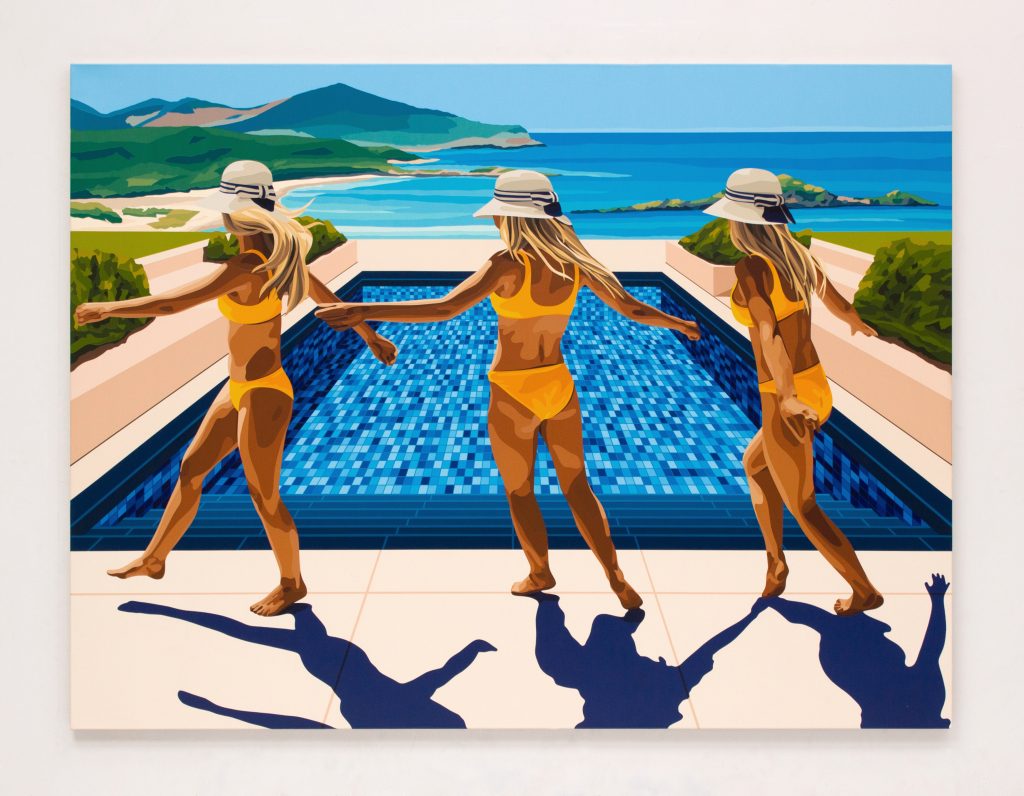
Will Martyr, You Shine So Bright (2022). Courtesy of Maddox Gallery, London.
What do you hope the exhibition, on the whole, evokes or inspires in visitors?
Ultimately, they depict moments and locations which are universally familiar. I want the viewer to be able to reminisce or import their own experiences into the compositions. We all seek to experience these perfect moments for ourselves and our loved ones, and if the paintings are able to engender or reignite those feelings of joy and companionship, they have been successful.
In what ways do you think the work in the forthcoming exhibition in London continues or deviates from the work included in your previous exhibition earlier this year with Maddox Gallery Gstaad?
In the Gstaad paintings, I didn’t want figures within the compositions. Instead, chairs, skis, and mountains are personified to become the players within the scene. A riot of color creates a perceived activity surrounding these subjects. Trampled snow, the chaotic jumble of skis and chairs placed as if in conversation, allow the visitor to occupy the space depicted. The compositions speak of conversations and times spent with the ones we love, in an impossibly beautiful location. The sentiment is similar in the works for London, but the female figure in all these works is front and center. She almost obscures the pristine views beyond. Here we are forced to engage with her. The viewer asks: Is she me? Is she my companion? Is she alone? These questions feed into a myriad of narratives for the viewer.
Together these exhibitions follow the same enduring theme in my work: one of celebrating life, beauty, and time spent with the people we love.
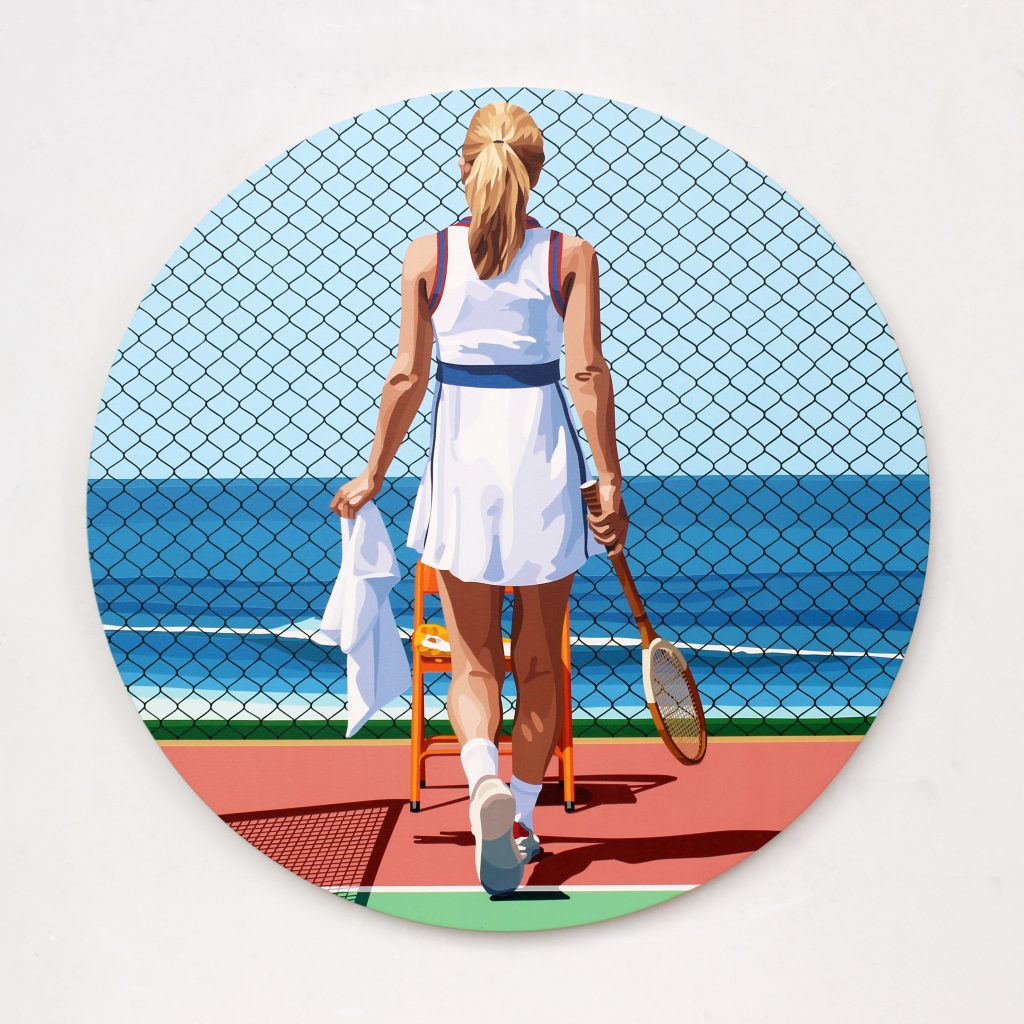
Will Martyr, Beauty and Purpose (2023). Courtesy of Maddox Gallery, London.
You frequently use round canvases, or “tondos,” what first inspired you to use this style of canvas?
A tondo canvas offers a perfect vignette into the world elsewhere. They act like a love locket or port hole, seemingly embracing the scene and adding a dreamlike quality to the compositions. It is a compositional tool I admire within the work of Sandro Botticelli’s The Madonna of the Magnificat (1481) in the Uffizi.
Are there artists or movements—historical or contemporary—that have particularly influenced you?
The Abstract Expressionist movement in New York in the ’50s was a particularly formative influence on me. It led me to take a studio in New York in my early twenties for several years. In addition, the Italian Futurist, British Vorticist, and Russian Constructivist movements in the interwar period introduced me to a geometric painting style, depicting a modern energy and intensity. Artists such as David Hockney, Wayne Thiebaud, and Alex Katz are also important influences.
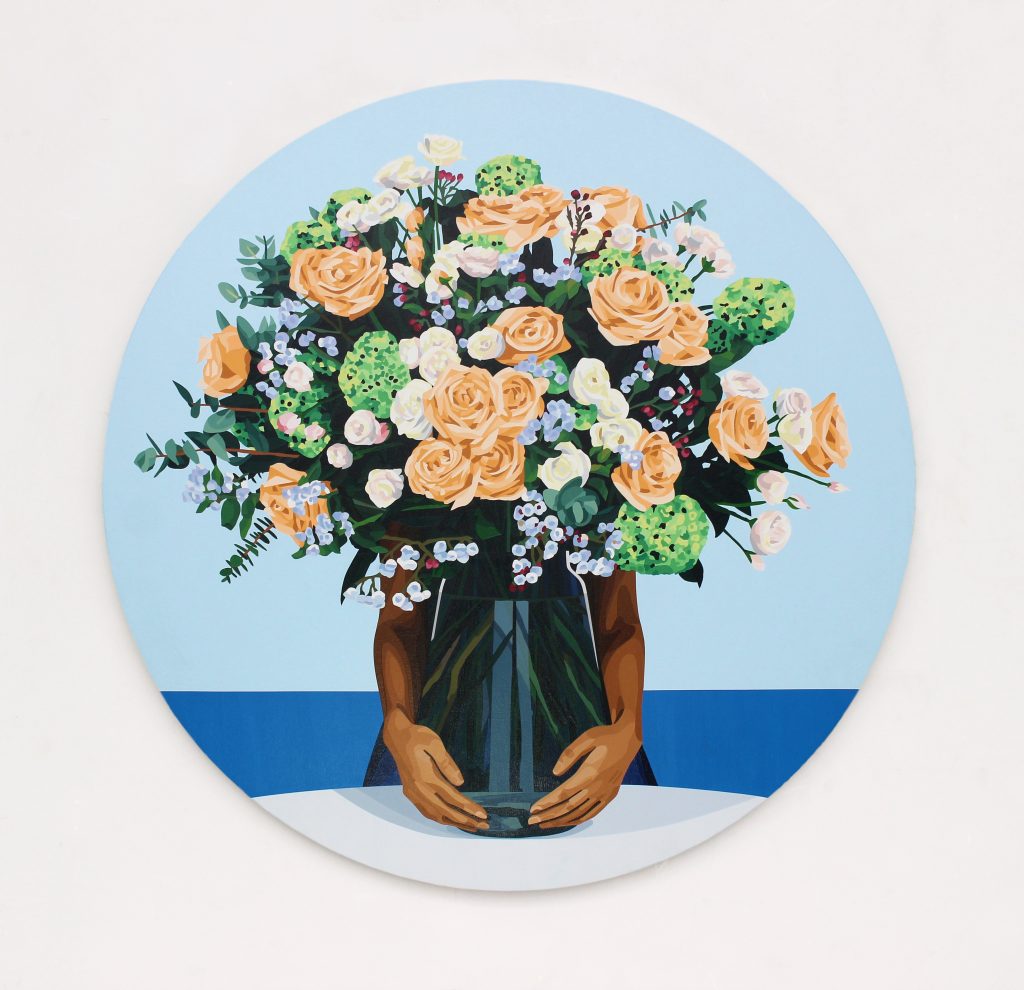
Will Martyr, What Good Is Love That No One Shares (2023). Courtesy of Maddox Gallery, London.
I’ve read that you describe yourself as a colorist, how is this reflected in your creative process? Is it more intuitive or does it lend to a more formal, planned-out approach?
Playing with color has always been the element of my practice I have enjoyed the most. It was when looking at canvases by Ellsworth Kelly, Al Held, and Mark Rothko that I first became aware of how powerful simple color field paintings can be. In my work, I control and plan every element of the making process. Once the composition is hand drawn onto the canvas, I premix all the colors that are the constituent parts of the painting. This complete control allows me to hone the final experience of the work.
What are you working on now, or hope to work on next? Are there any themes or subjects you’d like to engage with that you haven’t yet?
I am working on a select number of private commissions over the summer and then will be working toward a new exhibition in early 2024. These works will comprise not only paintings but sculptures and prints. I also plan to make paintings that focus more on the experience of architectural space.
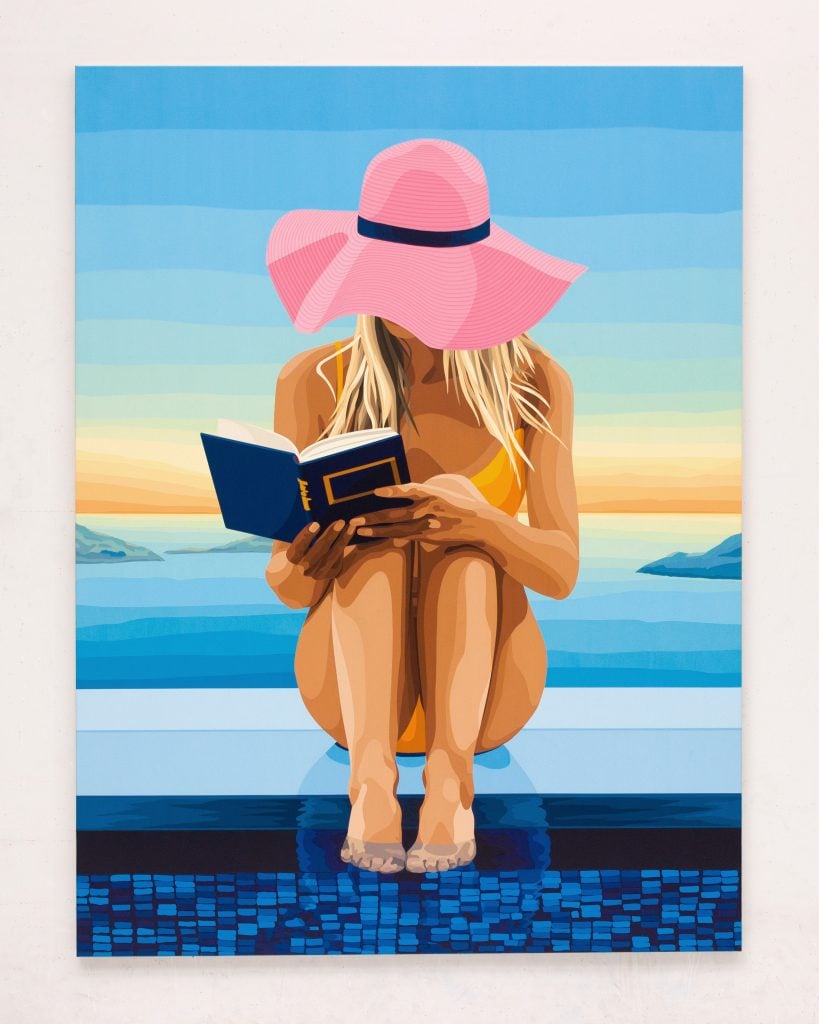
Will Martyr, She Chose Me (2022). Courtesy of Maddox Gallery, London.
“Will Martyr: A World Elsewhere” is on view at Maddox Gallery, London, April 28–June 11, 2023.
